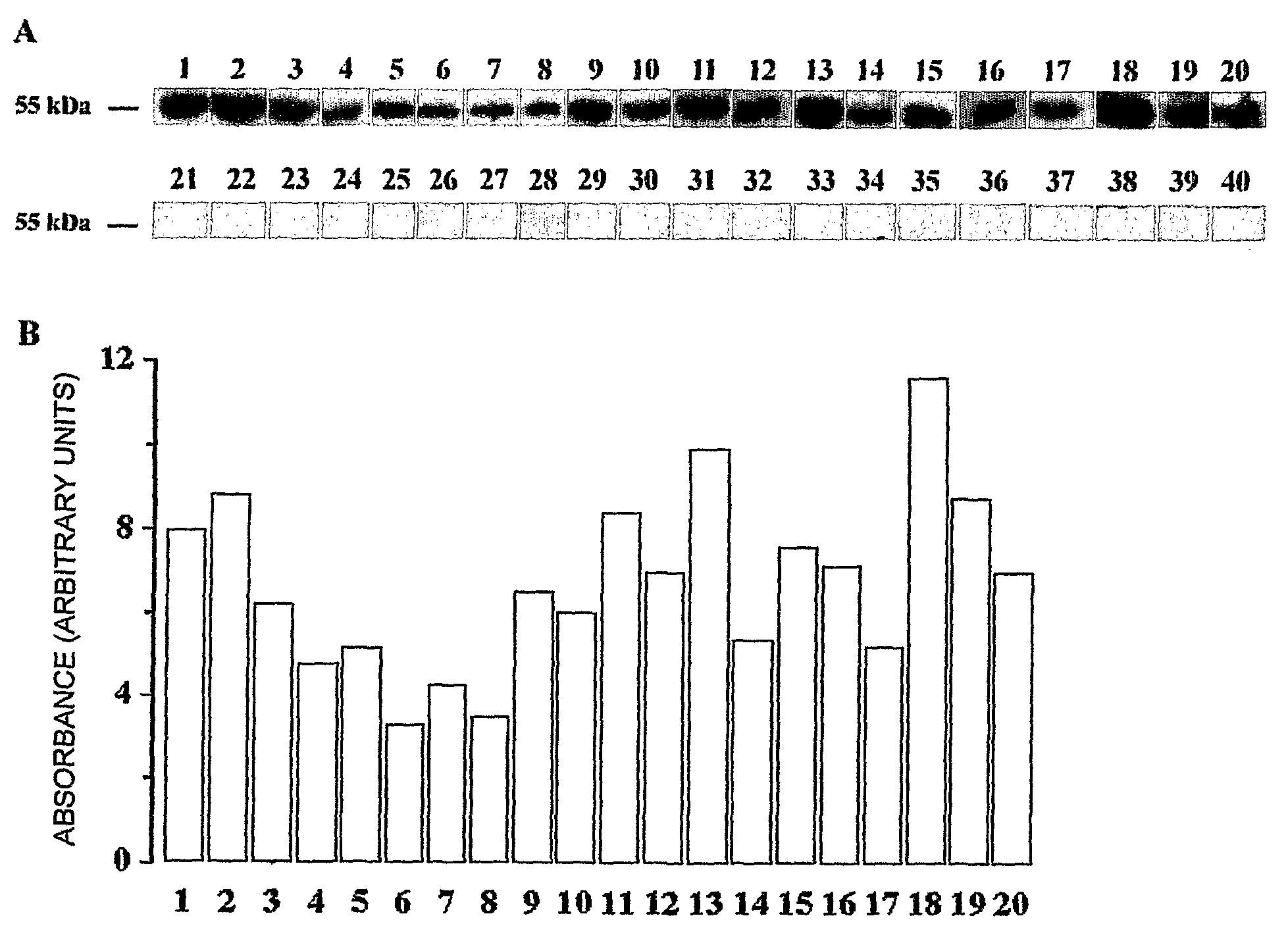Use of the salivary protein CD14 as an indicator of the low risk to developing dental caries
a salivary protein and low risk technology, applied in the field of in vitro assay method, can solve the problems of insufficient content and difficulty in quantitatively detecting changes in specific proteins
- Summary
- Abstract
- Description
- Claims
- Application Information
AI Technical Summary
Benefits of technology
Problems solved by technology
Method used
Image
Examples
example 1
Salivary Analysis
[0024]40 unrelated Italian healthy children, aged 6 to 12 years, were examined clinically by an experienced dentist; criteria for inclusion were no general diseases, no medication and no extracted teeth. 20 of them (8 males, 12 females; age=8.45+0.358 years) were caries-free (CF), and 20 (9 males, 11 females; age=7.9+0.341 years) were caries-active (CA: defined as having from 2 to 8 carious lesions requiring restoration).
[0025]The study was approved by the local ethical committee; written and oral informed consent was given by all participants.
[0026]The subjects were instructed to refrain from eating, drinking or using breath fresheners for a minimum of 2 hours before collecting saliva. Unstimulated human whole saliva (about 5 ml) was collected between 8 and 10 a.m. by the same examiner prior to clinical examination, to reduce possible circadian variations.
[0027]The subjects were invited to clean their teeth with a toothbrush, rinsing the mouth with water. After a 1...
example 2
Western Blot Analysis
[0029]Electrophoresis reagents were from Bio-Rad Laboratories (Richmond, Calif.). The protein content of whole saliva was assessed with the BCA kit from Pierce (Rockford, Ill.).
[0030]If not otherwise specified, other reagents were purchased from Sigma Chemical Co. (St. Louis, Mo.) and Aldrich (Milan, Italy).
[0031]Samples were directly solubilized in lysis buffer (125 mM Tris-HCl, 4% sodium dodecylsulfate, 20% glycerol, pH 6.8, 10% β-mercaptoethanol, and 0.002% bromophenol blue) and boiled for 5 min prior to running gels. Aliquots containing 30 μg of proteins were subjected to sodium dodecylsulfate-polyacrylamide gel electrophoresis (12% polyacrylamide). Proteins were transferred to a PVDF filter membrane (Immobilon P, Millipore, Bedford, Mass.) and incubated with an anti-human CD14 polyclonal antibody (from goat; Upstate, D.B.A., Italy), diluted 1:500 in PBS-BSA 1%.
[0032]After overnight incubation, the membrane was washed with PBS-Tween 0.1% and subjected for 1 ...
PUM
 Login to View More
Login to View More Abstract
Description
Claims
Application Information
 Login to View More
Login to View More - R&D
- Intellectual Property
- Life Sciences
- Materials
- Tech Scout
- Unparalleled Data Quality
- Higher Quality Content
- 60% Fewer Hallucinations
Browse by: Latest US Patents, China's latest patents, Technical Efficacy Thesaurus, Application Domain, Technology Topic, Popular Technical Reports.
© 2025 PatSnap. All rights reserved.Legal|Privacy policy|Modern Slavery Act Transparency Statement|Sitemap|About US| Contact US: help@patsnap.com

